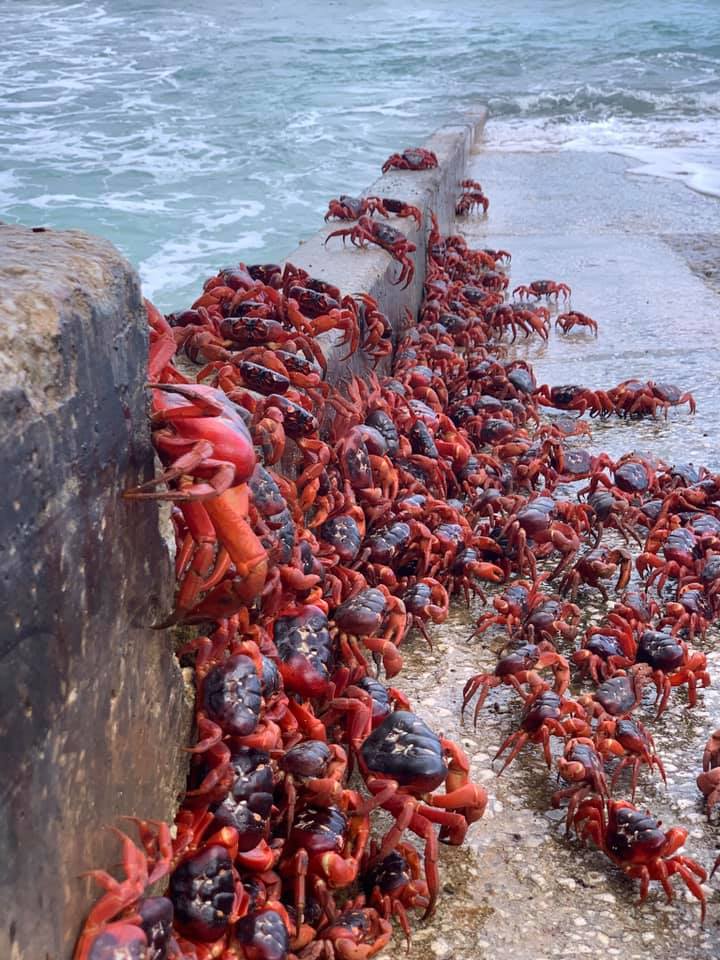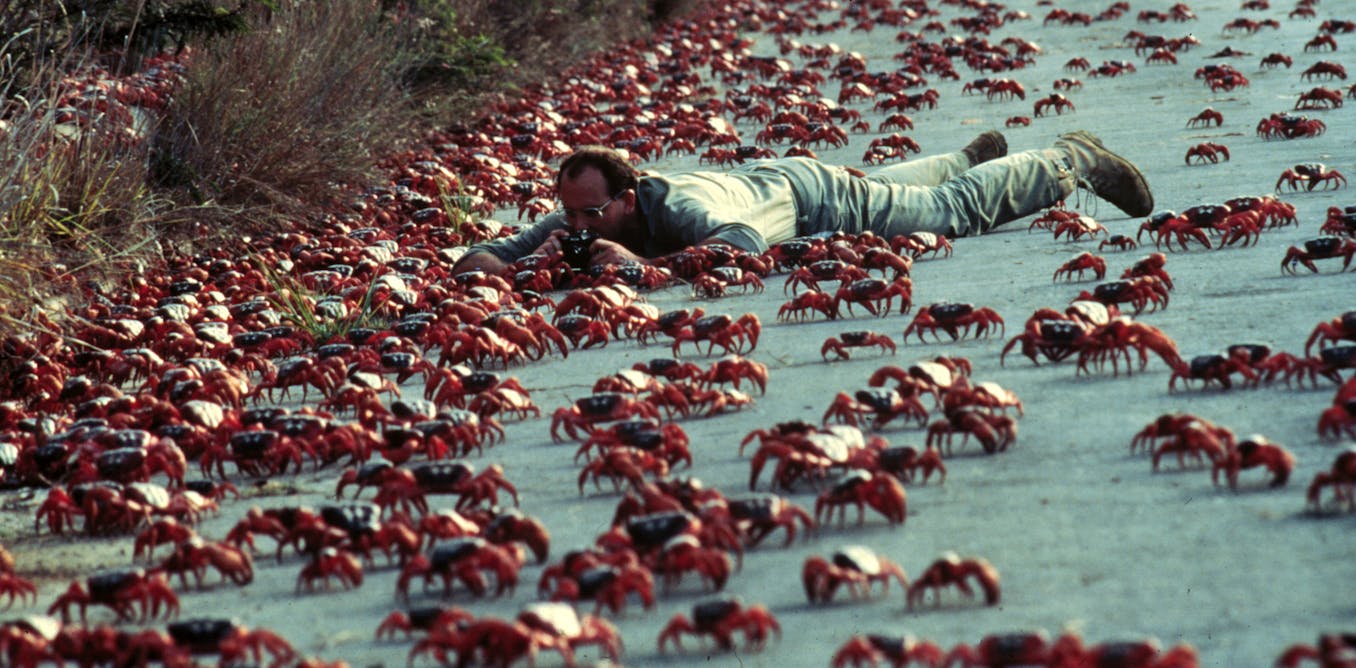Once every year, millions of red crabs migrate from the forests of Christmas Island to the ocean shore.
 Officials often close roads to keep the crabs safe. Image credit: frogtrail images
Officials often close roads to keep the crabs safe. Image credit: frogtrail images
Christmas Island is a small piece of land in the Indian Ocean that belongs to Australia. It’s best known for its native red crabs that can’t be found anywhere else in the world. According to the Australian government, an estimated 50 million red crabs inhabit the island. When the first rainfall of the wet season arrives, millions of red crabs emerge from the forest and march through towns, roads, and bridges, all the way to the Indian ocean to breed.

This event is the biggest tourist attraction of Christmas Island, and it draws many nature-lovers from all over the world.
 They can cover large areas throughout their route. Image credit: frogtrail images
They can cover large areas throughout their route. Image credit: frogtrail images
These large crabs are about 4.6 inches (116 millimeters) wide – males usually reach larger sizes than females, though. Their strong claws are normally the same size. Even if these limbs become injured or detached, they are capable of regenerating them, just like many other crab species. Most of them sport bright red colors, but some can be orange or, much more rarely, purple.

Red crabs dig burrows or shelter themselves in deep rock crevices, where they spend most of the year. Due to their sensitivity to moisture, during the dry season, they even cover the entrance of their burrows with leaves to maintain a higher level of humidity inside. Therefore, they totally disappear for months.
 They emerge from the forests and head for the seashore. Image credit: frogtrail images
They emerge from the forests and head for the seashore. Image credit: frogtrail images
Around October-December, once the wet season is about to return, red crabs begin their epic migration and leave their burrows to head for the shore of the Indian Ocean where they mate and spawn. The colorful columns of crabs are led by the males, who are followed by the females. It can take up to a week till the crab masses reach their destination, and they can turn up literally everywhere during this time – it’s quite usual for them to cover large areas throughout their journey. To help the red crabs migrate safely, officials and park staff have installed specially-made crab bridges and underpasses along roads.
The exact time of when the crabs lay their eggs is always determined by a particular lunar phase. They always spawn during the last quarter of the moon, just before the morning tide recedes. Amazingly, these incredible little creatures know exactly which lunar date is the best time to leave their burrows and spawn.
 Crab bridges grant a safe passage for the migrating crabs. Image credit: Parks Australia/Reuters
Crab bridges grant a safe passage for the migrating crabs. Image credit: Parks Australia/Reuters
First things first, the crabs take a dip in the ocean when they arrive at the shore, to replenish moisture. After their refreshing bath, the males retreat to the lower terraces of the shore to dig burrows. However, due to the large number of crabs, the density of these burrows is very high and males often fight each other over possession of the burrows. Then, the females join the male crabs on the terraces and they mate inside the burrows. Once they’ve mated, males take another dip in the ocean and begin their journey back to the areas where they spend most of the year.
Female crabs stay behind in the newly dug burrows and lay eggs within three days of mating. Every single one of them can produce up to 100,000 eggs at a time and will stay with them for two weeks as they develop. With the arrival of the waning moon (when the moon reaches its last quarter), the crabs carry their eggs to the shoreline and release them into the ocean, where they hatch almost instantly. While females head back into the forests after spawning, the offspring remain in the water until they are strong enough to venture after their parents.
The waning moon has key-importance here: it creates an angle that results in milder tides, which gives the baby crabs a better chance of survival. However, they still have other dangers to face. Millions of the newborns fall prey to marine predators, such as whale sharks or rays.
 The journey can take up one week. Image credit: frogtrail images
The journey can take up one week. Image credit: frogtrail images
Proximity to humans has also led to fewer crabs surviving the annual migration. The introduction of an invasive ant species, the yellow crazy ant, to Christmas Island poses a more serious problem for the red crabs. It is estimated that the ants have killed up to 15 million red crabs in recent years.
Even though the red crab population is sustaining heavy casualties, the International Union for Conservation of Nature (IUCN) has still not evaluated the conservation status of the crabs, so the species isn’t listed on their Red List yet.
There’s hope for the Christmas Island red crabs, though: according to the Australian government, once or twice every ten years, enough crabs survive to maintain the island’s red crab population.
Source: https://earthlymission.com








